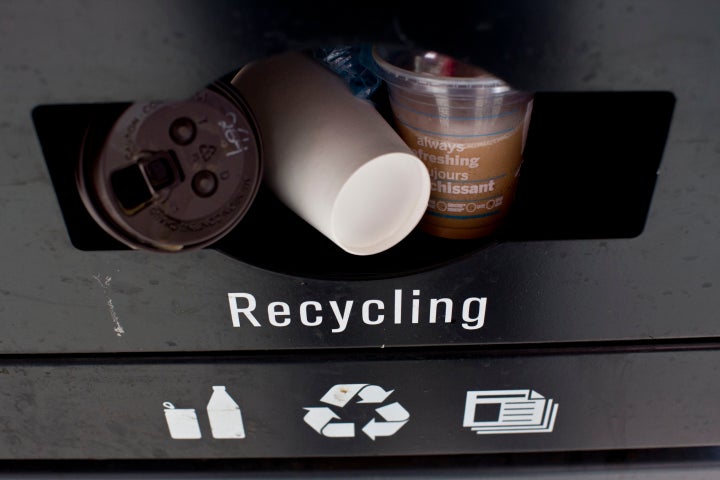Ever wondered why you can’t toss the cup from that coffee you just chugged down into the recycling bin in most parts of Canada? Turns out, the answer is pretty simple.
The vast majority of disposable coffee cups are made of cardboard, but are also lined with a thin plastic coating — you know, so your hot drink actually stays in the cup.
To illustrate exactly why you can’t throw these cups into the recycling in most jurisdictions, New Brunswick’s Fundy Region Solid Waste Commission posted photos of what a cup looks like after it’s been breaking down in water for two months. Sure enough, among the soggy cardboard is an intact plastic liner.
The Facebook post encourages people to bring their own reusable cups to pick up coffee.
You may ask, but what’s the big problem? Plastic can be recycled right?
It’s pretty hard for most facilities to separate the polyethylene lining from the paper, so the cups can’t be recycled into either paper or plastic. Most end up in landfills, the Guardian reported.
Some disposable cups are lined with wax instead of plastic — but figuring out which cups have the wax lining is another difficult issue for recycling companies.
Consumers shouldn’t throw the cups into the blue bin and hope for the best either — a non-recyclable disposable cup could contaminate a whole load of perfectly good recyclable material, meaning it all ends up in the landfill.

In some B.C. municipalities, single-use coffee cups are accepted in curbside recycling programs. If they’re empty and rinsed, they’re recycled as containers (not as paper). B.C. also has recycling depots that accept these cups if people want to drop them off there.
Toronto studied the possibility of adding disposable coffee cups to their recycling system in 2009 and found that sorting them, separating the materials, and then marketing them to recyclers would be too challenging, particularly since the paper from the cups is low grade.
Still, Starbucks recycled 25 million disposable cups last year into new ones in the U.S. to prove it could be done cost-effectively. Since Canadians are estimated to drink nearly 4.2 billion cups of takeout coffee a year, the sooner a solution is found to keep them out of landfills, the better.
It’s not all bad news though. Paper cup sleeves can be recycled. Some jurisdictions also take certain lids, so it’s important to check your local waste management system to see what they accept.